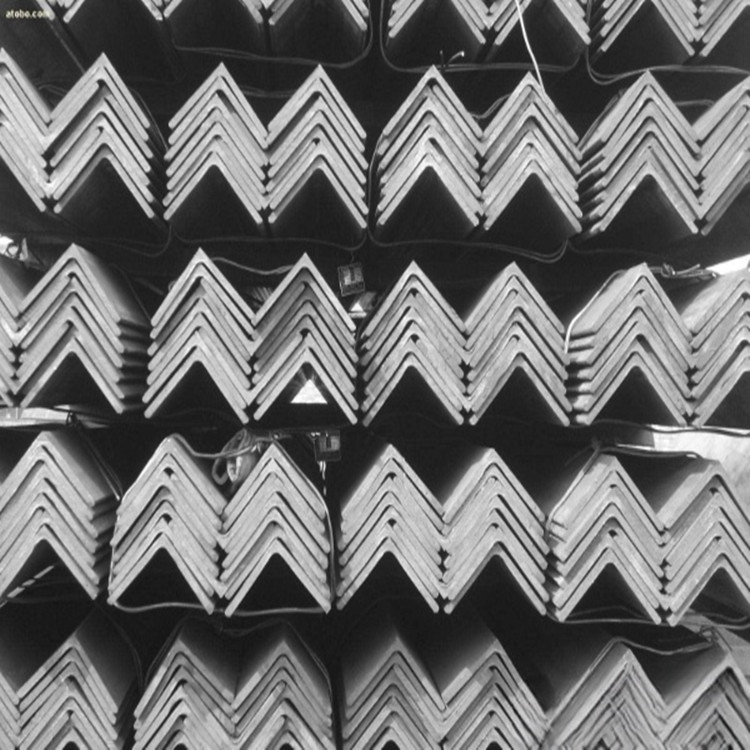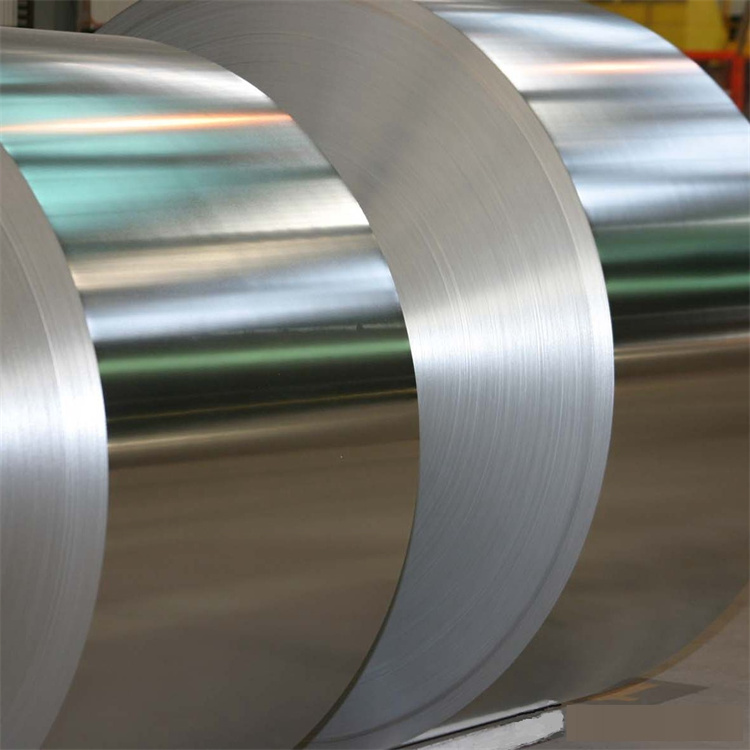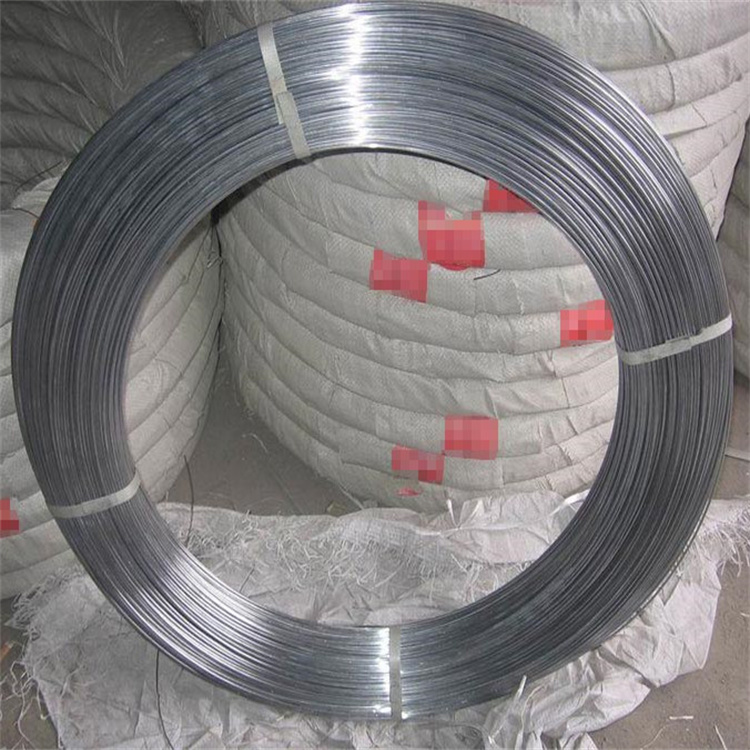Seamless Pipe vs Welded Pipe: A Comprehensive Comparison
In the realm of industrial applications, the choice between seamless pipes and welded pipes is pivotal. Both types serve critical functions across various sectors, including oil and gas, construction, automotive, and more. Understanding the differences, advantages, and limitations of each can significantly impact project outcomes, safety, and cost-efficiency. This article delves deep into the comparison of seamless pipes vs welded pipes, supported by specific research data and detailed analysis to aid informed decision-making.
Introduction
Pipes are fundamental components in various industries, facilitating the transport of liquids, gases, and other substances. The selection between seamless and welded pipes is crucial, influencing factors such as strength, flexibility, cost, and suitability for specific applications. This comprehensive comparison aims to elucidate the distinctions and guide professionals in making informed choices.
Understanding Pipe Types
Seamless Pipes
Seamless pipes are manufactured without any joints or seams, offering a continuous and uniform structure. They are produced through solid billet extrusion or rotary piercing methods, resulting in pipes with consistent strength and reliability. Seamless pipes are highly favored in applications requiring high pressure and temperature resistance.
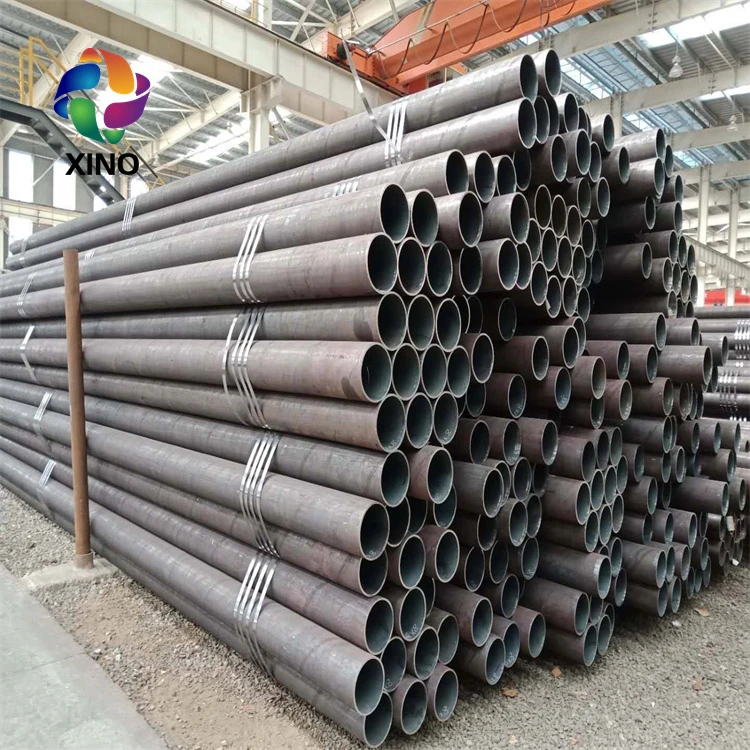
Welded Pipes
Welded pipes are created by rolling a metal sheet into a cylindrical shape and then welding the edges together. This method can produce pipes of various sizes and lengths efficiently. Welded pipes are generally more cost-effective and are widely used in applications where high pressure is not a critical factor.
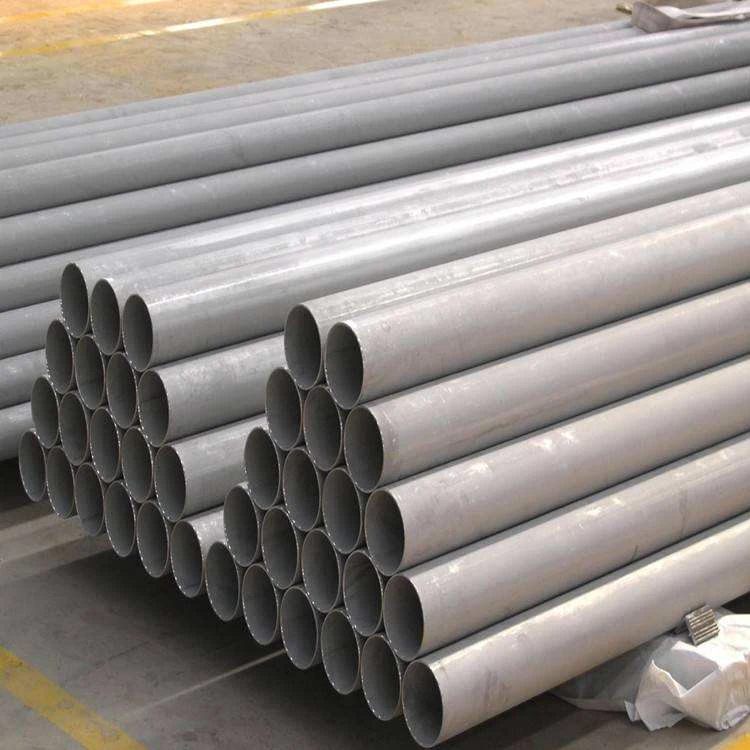
Manufacturing Processes
Seamless Pipe Manufacturing
The production of seamless pipes involves several steps:
Billet Selection: High-quality steel billets are selected as the raw material.
Piercing or Extrusion: The billet is heated and pierced using a piercing rod or extruded through a die to form a hollow shell.
Stretching and Sizing: The hollow shell is stretched and sized to achieve the desired dimensions.
Heat Treatment: The pipe undergoes heat treatment to enhance mechanical properties.
Finishing: Final touches, such as grinding and inspection, ensure the pipe meets quality standards.
Welded Pipe Manufacturing
The manufacturing of welded pipes involves the following steps:
Sheet Rolling: A metal sheet is rolled into a cylindrical shape.
Edge Preparation: The edges of the rolled sheet are prepared for welding.
Welding: The edges are welded using methods like Electric Resistance Welding (ERW) or Submerged Arc Welding (SAW).
Sizing and Shaping: The welded pipe is sized and shaped to the required dimensions.
Heat Treatment and Finishing: Similar to seamless pipes, welded pipes undergo heat treatment and finishing processes.
Comparative Analysis
Mechanical Properties
Seamless pipes generally exhibit superior mechanical properties compared to welded pipes. The absence of a weld seam in seamless pipes eliminates potential weak points, resulting in higher tensile strength and better pressure resistance. Welded pipes, while strong, may have slightly lower tensile strength due to the presence of the weld seam.
Cost Considerations
Welded pipes are typically more cost-effective to produce, especially for larger diameters and longer lengths. The manufacturing process is less time-consuming and requires less energy compared to seamless pipes. However, the initial investment for seamless pipe manufacturing equipment is higher, making welded pipes a more economical choice for projects with budget constraints.
Applications
Seamless pipes are preferred in applications involving high pressure, high temperature, and critical safety requirements, such as oil and gas pipelines, power plants, and aerospace industries. Welded pipes are widely used in water supply systems, structural applications, automotive industries, and general construction where extreme conditions are not prevalent.
Durability and Maintenance
Seamless pipes offer better durability and longevity due to their uniform structure and absence of weld seams, reducing the risk of corrosion and fatigue. Welded pipes, while durable, may require more frequent inspections and maintenance to ensure the integrity of the weld seams over time.
The Main Differences Between Seamless and Welded Pipes
Seamless and welded pipes serve similar functions but have significant differences in production processes, characteristics, and applications. Understanding these differences helps in selecting the most suitable pipe type for specific projects, especially in industries like oil and gas, construction, and petrochemicals.
Manufacturing Process
The primary difference lies in how these pipes are made. Seamless pipes are produced by heating and molding a solid cylindrical steel billet into a hollow shape, without any joints or seams. This continuous production results in pipes with higher strength and uniformity, which are often used in high-pressure applications.
Welded pipes, on the other hand, are created by rolling a steel plate into a cylinder and welding the edges together. Depending on the method, welded pipes can have longitudinal or spiral welds. Longitudinally welded pipes are common for low- to medium-pressure applications, while spiral-welded pipes are typically used in water transportation systems.
Strength and Durability
Because of their uniform structure, seamless pipes generally withstand higher pressure and offer greater durability, making them suitable for environments where safety and strength are paramount. For example, seamless pipes are often preferred in the oil and gas industry for transporting pressurized fluids, as they can handle extreme conditions without failing.
Conversely, welded pipes are somewhat more susceptible to pressure changes due to the welded seam, making them less ideal for high-pressure applications. However, improvements in welding technology have minimized this gap, making welded pipes strong enough for many industrial uses at a lower cost.
Cost and Efficiency
Cost is another key factor. Seamless pipes are generally more expensive due to their complex manufacturing process and higher material waste. Welded pipes are usually more economical, especially for large-diameter applications where cost efficiency is crucial. For example, in water distribution projects requiring wide diameters, welded pipes are frequently chosen to minimize expenses.
Quality and Testing Standards
Both seamless and welded pipes undergo strict quality testing to meet industry standards like ASTM, API, or ASME. However, seamless pipes often pass more rigorous inspections due to their high-pressure applications. Welded pipes undergo non-destructive tests (NDT) for weld quality and are widely accepted in structural and low-pressure projects.
In summary, seamless pipes excel in high-pressure environments due to their strength and uniformity, while welded pipes offer cost savings for large-scale projects. The choice ultimately depends on project-specific needs, budget, and the level of structural integrity required.
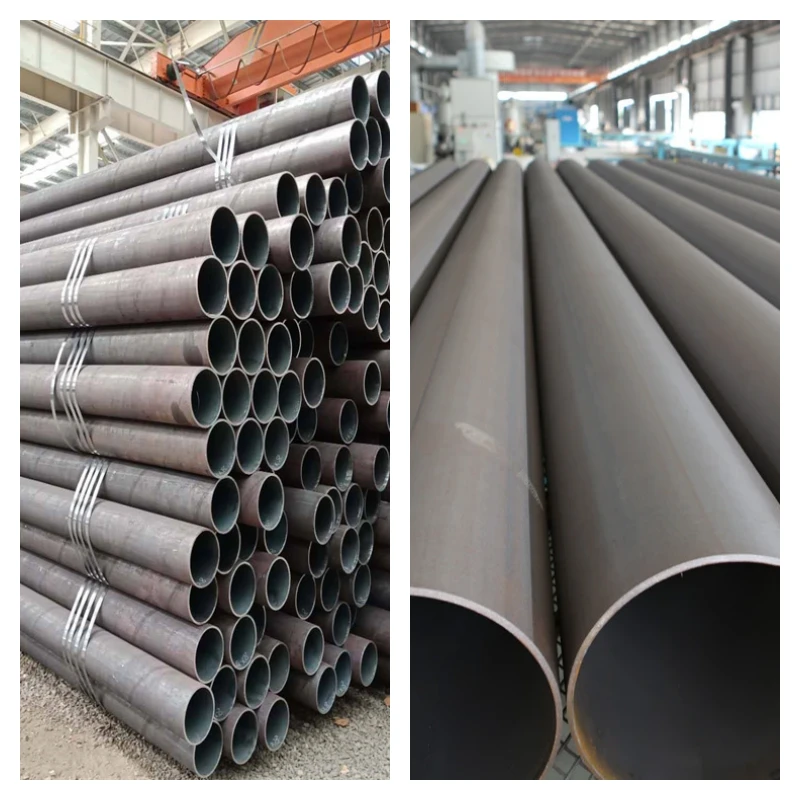
Research Data and Case Studies
Mechanical Properties Comparison
| Property | Seamless Pipe | Welded Pipe |
|---|---|---|
| Tensile Strength (MPa) | 520 | 450 |
| Yield Strength (MPa) | 350 | 300 |
| Elongation (%) | 25 | 20 |
| Pressure Rating (Bar) | 250 | 200 |
| Impact Resistance (J) | 100 | 80 |
Source: Industry Standards and Research Studies
Cost Analysis
| Parameter | Seamless Pipe ($/m) | Welded Pipe ($/m) |
|---|---|---|
| Manufacturing Cost | 15 | 10 |
| Material Cost | 8 | 7 |
| Labor Cost | 3 | 2 |
| Total Cost | 26 | 19 |
Source: Manufacturing Cost Reports 2023
Case Study: Oil and Gas Industry
In the oil and gas sector, the choice between seamless and welded pipes is critical. A 2022 study by the International Pipeline Conference highlighted that seamless pipes exhibited 30% higher durability under high-pressure conditions compared to welded pipes. This increased durability translates to lower maintenance costs and longer service life, justifying the higher initial investment in seamless pipes for critical infrastructure.
Case Study: Construction Industry
Conversely, in the construction industry, where cost-efficiency and ease of installation are paramount, welded pipes are predominantly used. A 2023 survey by the Construction Management Association found that welded pipes accounted for 70% of pipe usage in large-scale building projects due to their lower costs and sufficient performance in non-critical applications.
When Should Seamless Pipes Be Chosen Over Welded Pipes?
Choosing between seamless and welded pipes depends on the intended application, required pressure tolerance, and cost constraints. There are several scenarios where seamless pipes are more suitable:
High-Pressure Applications
Seamless pipes have a continuous, joint-free structure that provides higher strength, making them preferable in high-pressure applications. For instance, in the energy sector, transporting gas or oil requires pipes that can withstand internal pressure without failing. A study by the American Petroleum Institute (API) shows that seamless pipes are widely used for pipelines carrying crude oil under high pressure, as they are more reliable against leaks or bursts.
Extreme Temperature Conditions
Seamless pipes also perform better in extreme temperature environments, as their uniform construction reduces the risk of deformation. In industries like chemical processing, where pipes may carry superheated fluids, seamless pipes are favored due to their resistance to temperature variations. Research by the American Society of Mechanical Engineers (ASME) highlights seamless pipes’ durability in high-temperature environments, noting that they are less likely to warp or crack under prolonged thermal stress.
Corrosive or Hazardous Materials
When transporting corrosive or hazardous materials, seamless pipes are a safer option because they eliminate the risk of weld failure, which could lead to leaks. For example, in a petrochemical plant where pipes carry caustic chemicals, seamless pipes help ensure safe and reliable transport. This choice is supported by standards like ASTM A312 for stainless steel pipes, often used for seamless options to resist corrosion effectively.
Long-Distance Pipeline Projects
Seamless pipes are often used in long-distance pipeline projects, particularly those involving challenging terrain or underwater routes, where maintenance and repairs are costly. For instance, oil and gas pipelines stretching over hundreds of miles use seamless pipes to minimize the risk of leaks or cracks, as any maintenance in these areas is both difficult and expensive.
Structural Integrity in Critical Components
In industries like aviation and aerospace, seamless pipes are preferred for high-precision applications that demand structural integrity and reliability. Aerospace components that carry pressurized fluids often use seamless pipes because even the smallest flaw could compromise safety. This is also true in manufacturing nuclear reactors, where seamless pipes help ensure the integrity of cooling systems.
While seamless pipes are generally more expensive, their durability and reliability in high-stress applications often justify the cost. When selecting pipe types, understanding these scenarios helps prioritize safety, performance, and long-term costs.
How Does Pipe Size and Diameter Affect the Choice Between Seamless and Welded Pipes?
The size and diameter of pipes significantly influence the choice between seamless and welded options. Each type offers specific advantages and limitations, making one more suitable than the other depending on the project’s scale and requirements.
Small to Medium Diameter Applications
Seamless pipes are often preferred for small to medium diameters, typically up to 24 inches (600 mm) in diameter. These pipes are known for their high strength, consistent structure, and excellent pressure tolerance. In applications where internal pressure is high, such as in oil and gas pipelines or hydraulic systems, the uniform structure of seamless pipes is advantageous, providing reliability and safety without welded seams that could potentially weaken under pressure.
For instance, the American Society of Mechanical Engineers (ASME) guidelines recommend seamless pipes for high-pressure piping systems, often used in refineries and chemical processing plants. These pipes handle pressure surges well due to their seamless construction, making them ideal for environments that require consistent and long-lasting performance.
Large Diameter Applications
When it comes to larger diameters, welded pipes become a more practical choice. Welded pipes are typically more economical and available in larger diameters, which makes them suitable for large-scale projects like water transportation, structural support, and low-pressure piping systems. For instance, in municipal water supply systems, welded pipes up to 120 inches (3,000 mm) in diameter are commonly used, as they can be manufactured in wide sections to transport large volumes of water over long distances.
According to the International Organization for Standardization (ISO), standards for welded pipes, such as ISO 3183 for pipeline transportation systems, provide specific guidelines for large-diameter pipes, often preferred for their cost-efficiency and practicality in non-pressurized settings.
Impact on Cost and Installation
Larger diameter seamless pipes can be expensive and challenging to produce, making welded pipes a more affordable choice for non-critical uses. Welded pipes allow for customization in terms of length and diameter, offering flexibility in project design and reducing overall costs. For example, using welded pipes in sewage or water systems saves resources and simplifies the installation process, as these pipes can be manufactured in long lengths, requiring fewer joints.
In summary, smaller diameters benefit from the strength and durability of seamless pipes, while welded pipes are ideal for large diameters where high pressure is not a primary concern. This distinction helps guide decision-making based on both budget and project requirements.
The Main Industry Standards Governing Seamless and Welded Pipes
Seamless and welded pipes are subject to stringent industry standards that ensure safety, quality, and consistency in their applications. Each standard specifies material composition, testing methods, dimensional tolerances, and performance benchmarks.
American Society for Testing and Materials (ASTM)
ASTM sets numerous standards for both seamless and welded pipes across various industries. For seamless pipes, ASTM A106 and ASTM A53 are common standards in the U.S. The ASTM A106 specification, for instance, is designed for seamless carbon steel pipes used in high-temperature services, making it suitable for refineries, power plants, and chemical facilities. ASTM A53, covering both seamless and welded pipes, is used widely in general-purpose applications, including mechanical and pressure use.
American Petroleum Institute (API)
API sets standards for pipes used specifically in the oil and gas industry. API 5L, for example, governs seamless and welded steel pipes used in pipeline systems. This standard ensures that pipes meet specific mechanical and chemical requirements to withstand extreme pressures and temperatures in environments like offshore drilling and long-distance pipeline transportation.
API 5CT is another standard specifically for casing and tubing in oil wells. Seamless pipes are often preferred for these applications due to their higher pressure tolerance and reliability in critical settings. This standard ensures pipes are manufactured with properties that resist corrosion and endure harsh environmental conditions.
International Standards Organization (ISO)
ISO has a wide range of standards covering seamless and welded pipes, ensuring consistency in materials, design, and testing procedures across international borders. For instance, ISO 3183 specifies standards for the materials, testing, and use of pipeline transportation systems in the petroleum and natural gas industries. This includes both seamless and welded pipes, ensuring that each meets minimum performance thresholds to guarantee safety and reliability.
Importance of Compliance
Meeting these standards is crucial for manufacturers and end-users, as it assures that pipes will perform as needed for specific applications. Compliance is especially important in industries where failure could have severe safety or environmental consequences. For example, pipes used in chemical plants must meet ASTM or API standards to ensure that they can handle corrosive chemicals without degradation, ensuring long-term safety and operational efficiency.
In summary, understanding and adhering to these industry standards is essential for selecting and using pipes appropriately in various applications. Standards ensure that both seamless and welded pipes meet the demands of their intended environments, providing peace of mind for manufacturers and end-users alike.
The Common Testing Methods for Ensuring the Quality of Seamless and Welded Pipes
Testing is essential for verifying the quality and performance of both seamless and welded pipes. Rigorous testing methods are applied to assess mechanical strength, integrity, and durability before pipes are approved for use in industrial applications.
Non-Destructive Testing (NDT)
NDT is a primary testing method for both seamless and welded pipes, allowing manufacturers to detect any defects without damaging the material. Techniques include ultrasonic testing (UT), radiographic testing (RT), and magnetic particle inspection (MPI).
Ultrasonic Testing (UT): This method uses high-frequency sound waves to detect imperfections within the pipe. UT is especially useful for detecting cracks or inconsistencies in seamless pipes, where uniformity is critical for high-pressure applications.
Radiographic Testing (RT): RT, or X-ray testing, is commonly used on welded pipes to inspect the weld seam. This method identifies discontinuities in the weld, ensuring the structural integrity of the pipe under pressure. For example, in pipelines transporting hazardous materials, RT helps guarantee that welded seams will not fail under stress.
Hydrostatic Testing
Hydrostatic testing is a widely used quality test for both seamless and welded pipes, verifying that the pipe can withstand the pressure it will encounter in service. This method involves filling the pipe with water and pressurizing it beyond its operating limits. For example, API 5L standards for oil and gas pipelines mandate hydrostatic testing to ensure pipes can handle extreme pressure without leaks.
In hydrostatic testing, seamless pipes often perform better because they lack a welded seam, minimizing potential weak points. Welded pipes can pass this test too, but they undergo additional checks to ensure the weld holds up under pressure. This test is mandatory for pipes used in high-stress environments, such as power plants or chemical facilities.
Destructive Testing
For applications requiring the highest quality assurance, destructive testing may be used to analyze pipe samples. Methods include tensile testing, which measures how much force a pipe can withstand before breaking, and hardness testing, which assesses material durability. In welded pipes, these tests are applied to samples with a focus on the welded seam, as it is the most likely point of failure.
Corrosion and Environmental Testing
Some pipes, especially those used in corrosive environments (such as in the marine or chemical industries), require additional testing for corrosion resistance. Salt spray tests, for instance, simulate corrosive conditions to evaluate how well the pipe material withstands exposure to harsh elements. For seamless pipes in marine environments, corrosion testing ensures that they maintain their integrity, avoiding costly repairs or replacements.
In conclusion, various testing methods are essential to ensuring the safety and quality of both seamless and welded pipes. Through non-destructive, hydrostatic, destructive, and corrosion testing, manufacturers can ensure their pipes meet the highest standards for strength, reliability, and durability in demanding industrial environments.
Conclusion
Choosing between seamless pipes vs welded pipes hinges on the specific requirements of the application, budget constraints, and desired mechanical properties. Seamless pipes offer superior strength and durability, making them ideal for high-pressure and critical applications. On the other hand, welded pipes provide a cost-effective solution for a wide range of general-purpose uses. By understanding the distinctions and leveraging research data, industries can make informed decisions that optimize performance and cost-efficiency.
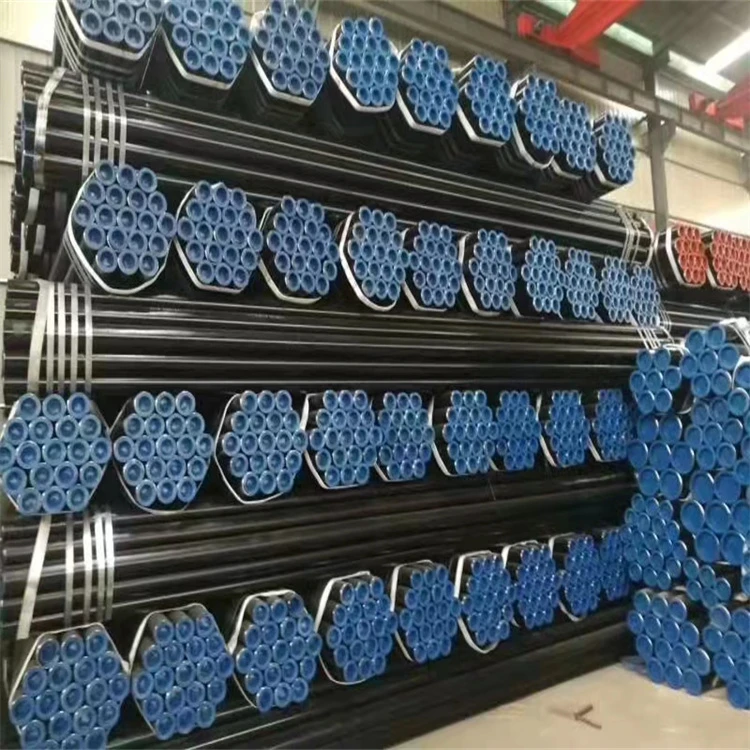
Promote Your Steel Product Needs with China Xino Group
As a global leader in steel products and engineering services, China Xino Group is uniquely positioned to support industries worldwide with high-quality steel solutions and expert technical services. Founded in August 2001, China Xino Group is a multi-national enterprise with a solid foundation and clear vision, focusing on steel production, metallurgical resources processing, estate development, and chemical industry services. With our strategic integration of resource development, trade logistics, project engineering, and equipment manufacturing, we provide comprehensive auxiliary services that bolster not only the steel industry but also various emerging sectors.
One of our flagship divisions, Qingdao Xino Steel & Iron Co., Ltd., is a premier manufacturer of coated steel products. Our facilities include three main production bases and six mills with a total of 24 production lines, yielding an impressive annual output of 1.5 million tons. Our coated steel product line includes Galvanized Steel (GI), Galvalume Steel (GL), Pre-Painted Galvanized Steel (PPGI), Pre-Painted Galvalume Steel (PPGL), and Tinplate/TFS (ECCS). These products are crafted to the highest standards to meet diverse industry demands, offering both durability and exceptional quality.
Why Choose China Xino Group for Your Steel Solutions?
Extensive Product Range: From galvanized steel and round steel bars to various types of pipes, beams, and steel culvert pipes, our diverse range meets all your steel product requirements.
Expert Manufacturing: With advanced production technology and a professional team, we ensure top-tier quality and precision for all our steel products.
Competitive Pricing: We offer highly competitive prices without compromising on quality, making us a cost-effective partner in steel product procurement.
Comprehensive Service and Support: Our team goes beyond just supplying products, providing end-to-end solutions for steel product procurement, technical service, and project management.
Global Reach and Reliability: With a registered capital of 150 million yuan and a robust infrastructure covering 50 acres, we have the capacity to handle projects of any scale, providing reliable service to clients worldwide.
Partner with Us for Optimal Steel Product Solutions
We are committed to continuously enhancing our service management to ensure that our clients receive not only high-quality products but also the best customer experience. At China Xino Group, our goal is to maximize value for both present and future customers, enabling industries to achieve their goals with durable, efficient, and dependable steel solutions.
To learn more about how China Xino Group and Qingdao Xino Steel & Iron Co., Ltd. can support your steel needs, please contact us today. Partner with us to experience the excellence and innovation that have defined our legacy in the steel industry.

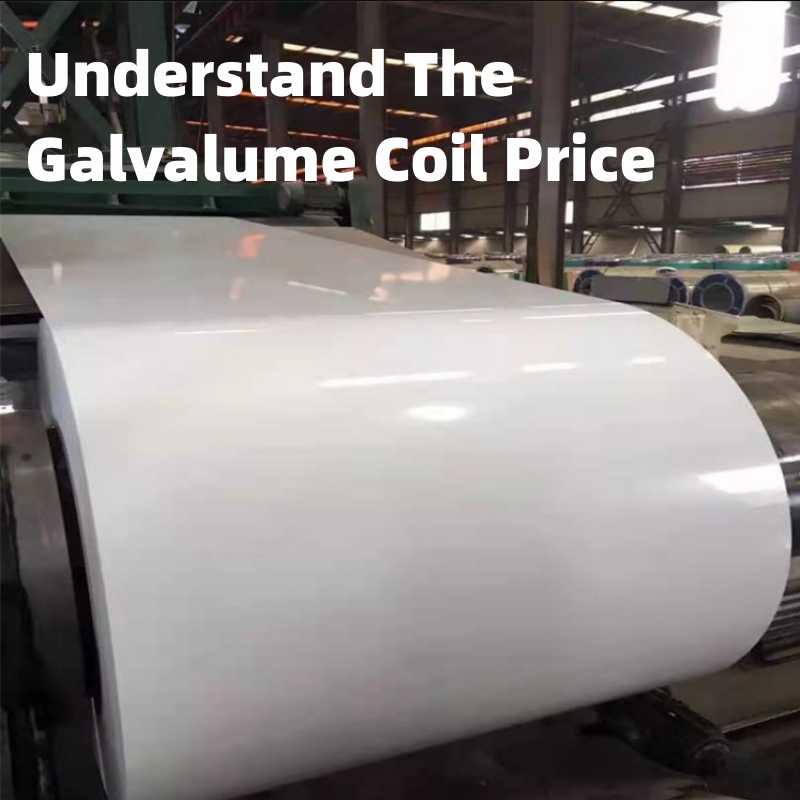
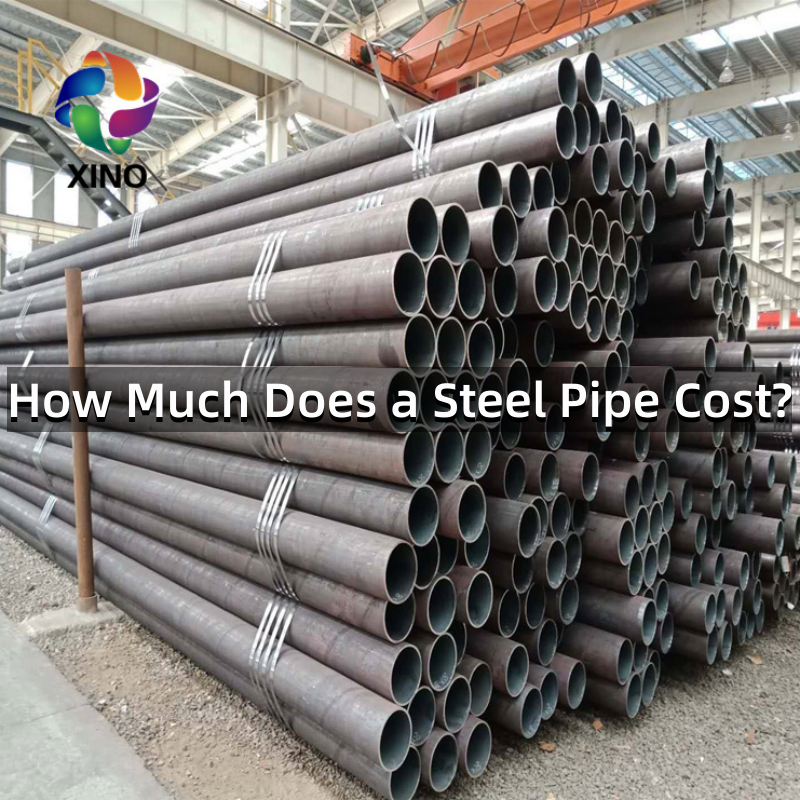
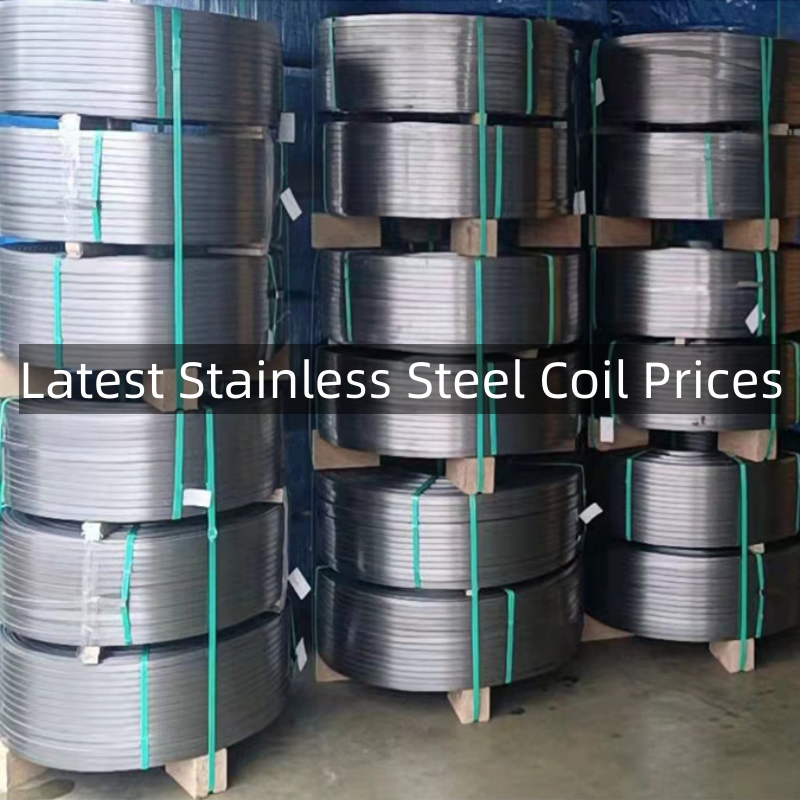
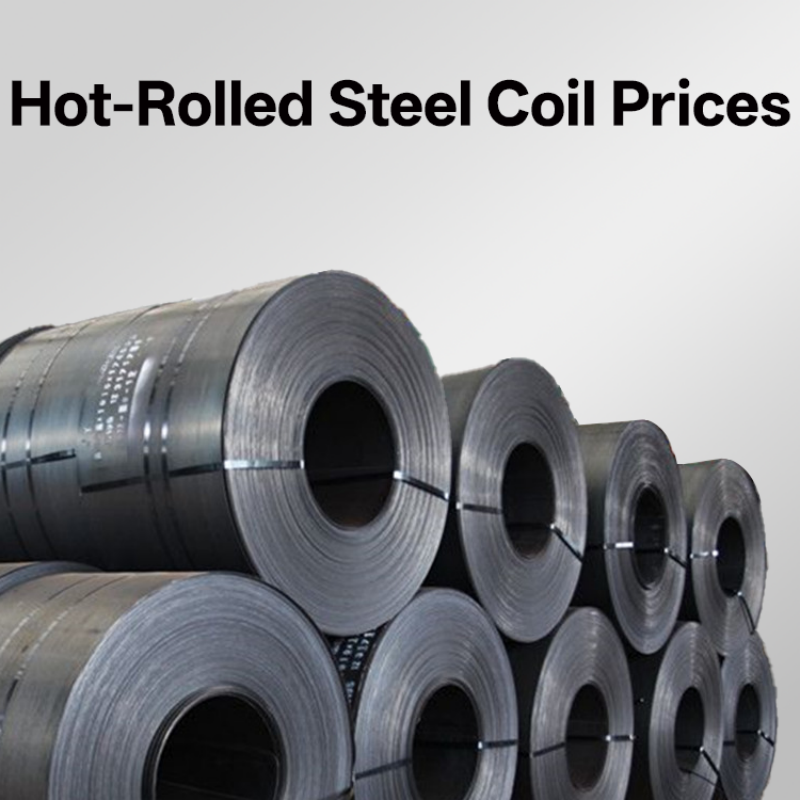
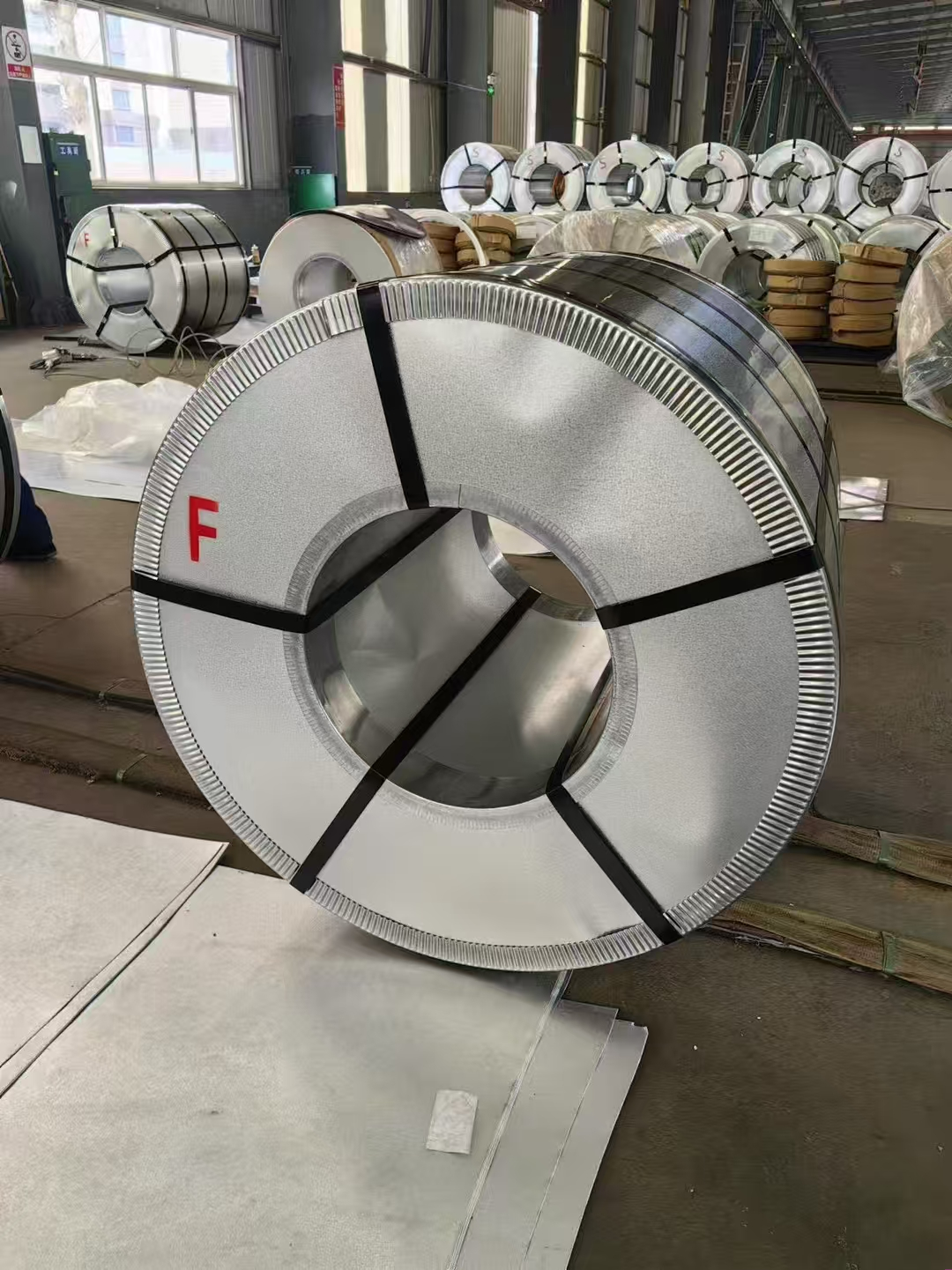
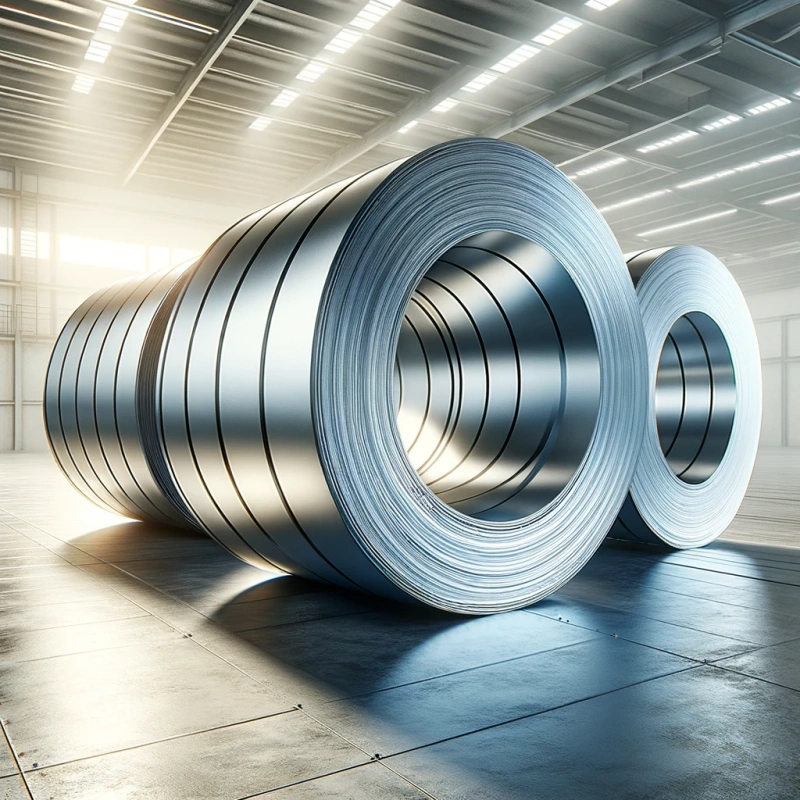
745.webp)
